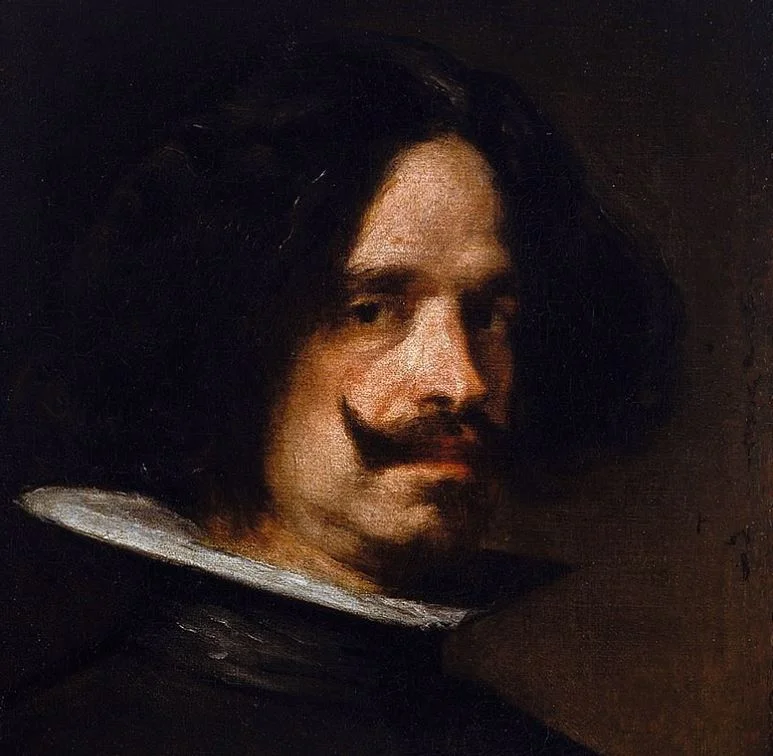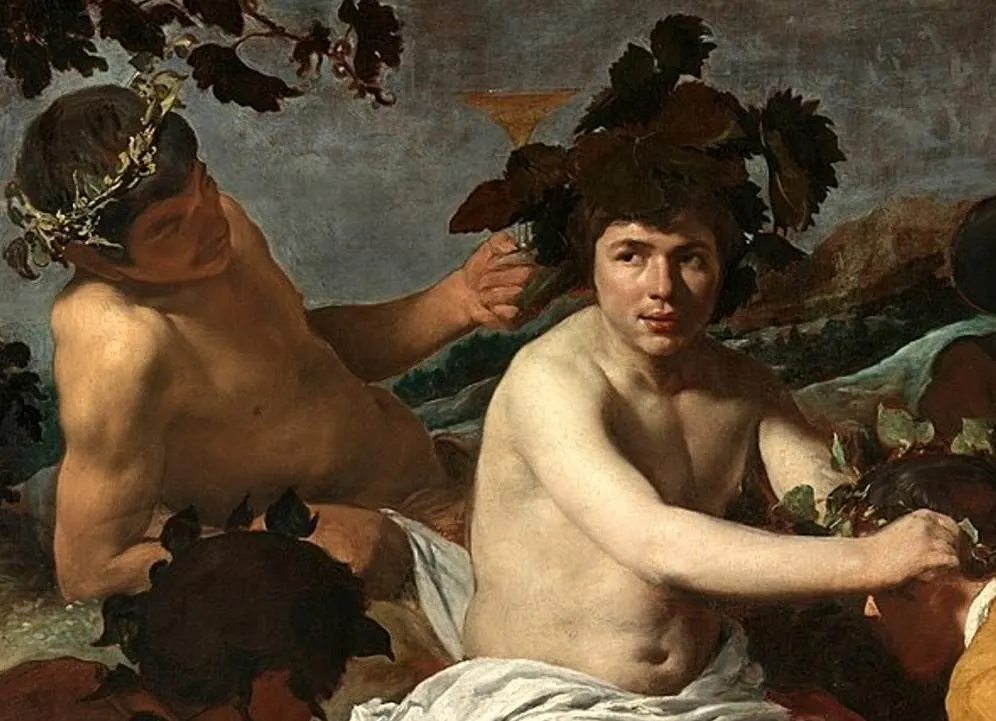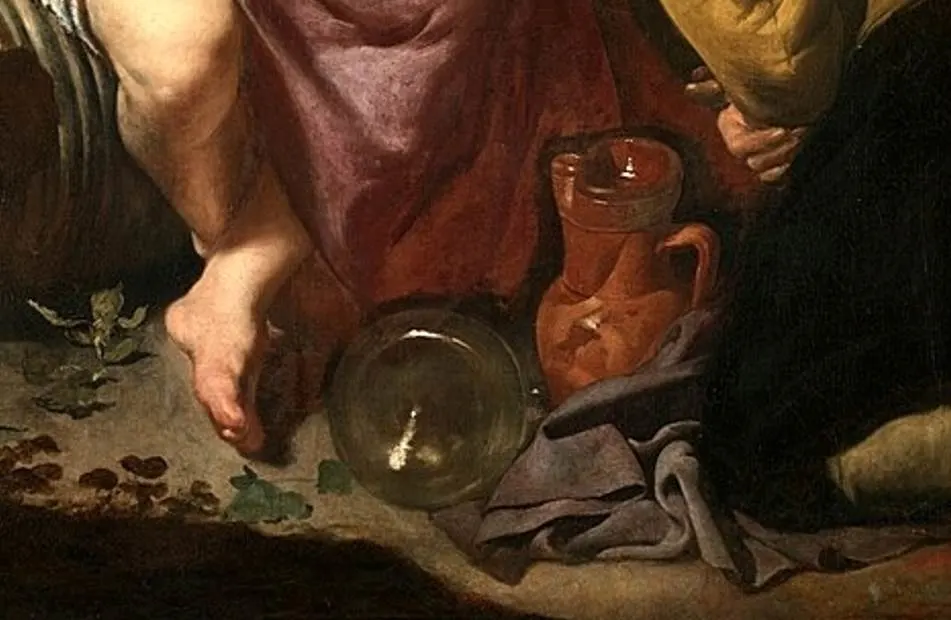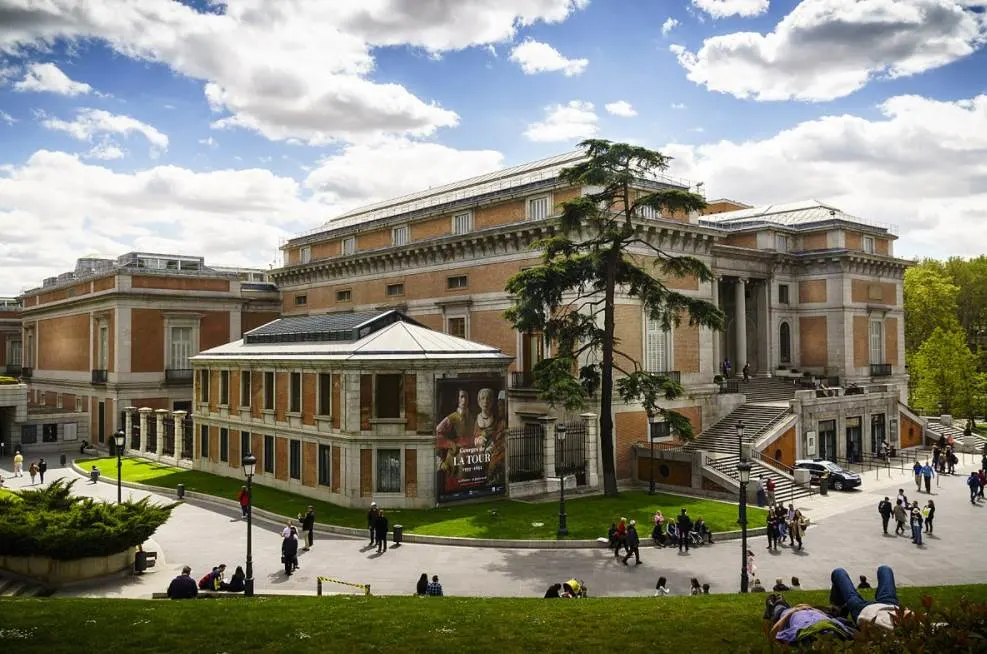When Diego Velázquez (1599-1660) traveled to Madrid in April 1622, The artist of the Baroque era had hoped to become the court painter of King Philip IV (1605-1665), a great patron of the arts. His opportunity came in December of the same year when court painter Rodrigo de Villandrando died.
He painted the king for the first time in August 1623 and the young man was so pleased that he would fulfill the duty of court painter for nearly 4 decades. He painted a large number of portraits of the king and his family, culminating in his ultimate masterpiece called “Las Meninas” (1656).
In this article, we’ll take a closer look at some of the most interesting facts about “The Triumph of Bacchus,” one of the paintings by Velázquez that is considered to be the ultimate masterpiece of his early phase in Madrid.
1. It was painted just before Velázquez left for Italy
Diego Velázquez officially became the court painter of King Philip IV of Spain in the year 1623, a great honor for the extremely talented young artist. He earned 20 ducats a month plus earned additionally for commissions he received.
The Triumph of Bacchus was commissioned in the year 1628 and completed in 1629. He received an additional 100 ducats (a silver or gold coin) for this painting on top of his already royal salary.
This painting, which is also referred to as “Los Borrachos” or “The Drunkards” was completed shortly before he left for Italy to study the paintings of the renowned Renaissance artists.

2. Velázquez painted the work following his meeting with a Flemish artist
Flemish artist Peter Paul Rubens (1577-1640) arrived in Madrid in September 1628 on a diplomatic mission. He eventually stayed at the royal court of Madrid for 7 months and spent a lot of time with Velázquez.
Both men got along very well and respected each other’s art. This didn’t result in Velázquez changing his style but it did spark his interest in visiting Italy. Rubens already lived in Italy for nearly a decade in the early 17th century and both artists had agreed to visit together, something that never materialized.
Both men visited the Escorial to admire the paintings by Titian that hung there. It’s assumed that the partial nudity of Bacchus in this painting was inspired by the prominent nudity in the Mythological paintings of Titian (1490-1576).

3. It depicts the Roman god of grape harvesting and wine

Dionysus was the god of grape harvesting, wine, orchards and fruit, vegetation, and even theater in ancient Greece. He was adopted by the Romans who named this god Bacchus.
Because wine has been a popular drink since ancient times, he has been a very popular figure in the world of art as well. He was often depicted in good company while enjoying his fruit juice, sometimes even appearing drunk as in Michelangelo’s Bacchus.
The contrast from classical art is quite staggering as he was usually portrayed in a carriage that was pulled by leopards along with several servants and guards.

4. The figure of Bacchus is considered to be allegorical
The Romans also referred to Bacchus as “Liber” which translates to “Free.” In that sense, Bacchus was often depicted as the liberator of the common people as they could forget their daily troubles with wine.
The artist depicted the god with an illuminated face which contrasts the dark faces of the other figures in the painting. Although he’s half-naked, the robes around the waist of both him and his servant are common for depicting mythological figures.

5. The artist included some of the trademarks of his Seville period
Velázquez chose to depict mythological figures as real people, something that he would repeat often in similar paintings throughout his career. He also included some elements that are reminiscent of his early period in Seville.
In paintings such as “The Waterseller of Seville” or “Old Woman Frying Eggs“, he depicted bottles, pots, and other common objects in an extremely realistic manner, typical for the bodega paintings he produced there.
He included this trademark from his early period as well into this painting. The bottle and pitcher near the feet of Bacchus resemble those he painted earlier and were painted with an extreme level of realism.
The illuminated body of the god is used as a source of light to reflect off these items, quite intriguing indeed.

6. It’s a unique work of art in the oeuvre of Velázquez
The contrast of the god and additional figures on the left and the 17th-century drinking buddies on the right couldn’t be bigger. Baccus is depicted as a pale young man while Los Borrachos on the right wear clothes worn by poor people and have dark skin.
While the deeper meaning of the painting has often been debated, it’s generally agreed that depicting peasants in a party-like atmosphere while drinking wine is associated with the notion that Bacchus represents a sense of freedom from the everyday struggle of these people.
Regardless of how this painting is interpreted, it was the first time that Diego Velázquez attempted to depict a mythological fable, something he would repeat many times in his career.

7. How big is The Triumph of Bacchus?
Many of the masterpieces of Diego Velázquez are relatively big, including Las Meninas, his Magnum Opus, which has dimensions of 318 × 276 centimeters (125.2 × 108.7 inches).
The Triumph of Bacchus is average in size as it has dimensions of 165 × 225 centimeters (65 × 89 inches).
8. Where is the painting located?
The painting originally hung in the summer bedroom of King Philip IV at the Royal Alcázar Palace in Madrid. The painting was damaged when the old palace burned down on Christmas Eve of the year 1734 and especially the left part of the face of Bacchus had to be restored.
It was subsequently moved to the New Royal Palace of Madrid after it was completed, and it didn’t have to move far away to its current location.
Today, you can find The Triumph of Bacchus by Diego Velázquez at the most famous museum in Spain, the Prado Museum in Madrid.

